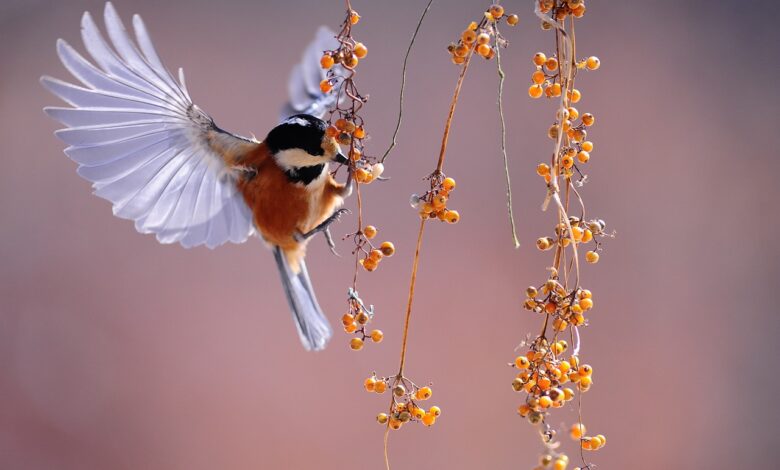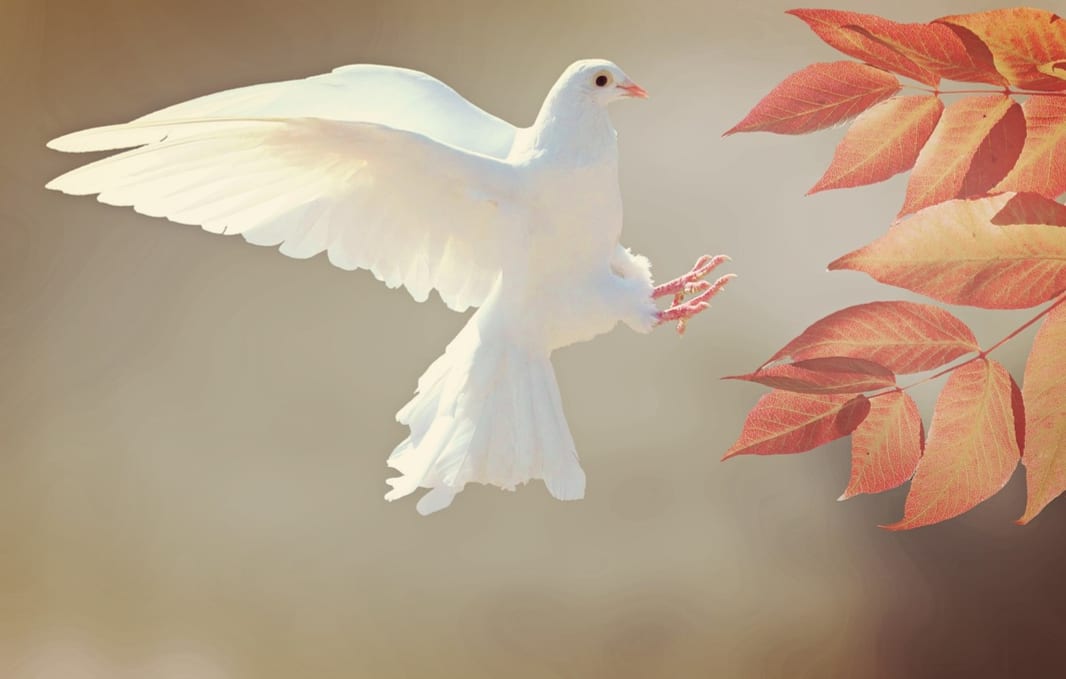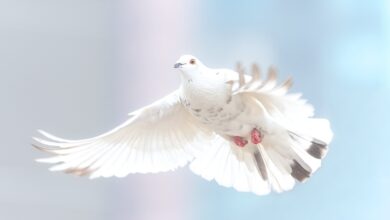Birds: Description, Species, Classification, Types, Facts, and More…

Birds are fascinating creatures that have captured the imagination of humans for centuries. With their ability to fly and their diverse range of colors, shapes, and behaviors, they are a diverse and captivating group of animals.
Table of Contents
Introduction to Birds
Birds are warm-blooded vertebrates belonging to the class Aves. They are found across the globe, from the Arctic to Antarctica, and display remarkable adaptations for flight. Birds come in various sizes, ranging from the tiny bee hummingbird to the majestic ostrich. With over 10,000 species identified so far, birds are one of the most diverse groups of animals on Earth.
Characteristics of Birds
• Feathers
One of the most distinguishing features of birds is their feathers. Feathers serve multiple purposes, including insulation, protection, and flight. They are made of a protein called keratin and are structured in a way that allows for efficient flight and different color displays, used for courtship rituals and camouflage.
• Beaks and Bills
Birds have beaks or bills that are adapted to their specific diets and lifestyles. Beaks can be long and slender for probing flowers for nectar (as seen in hummingbirds), or strong and hooked for tearing flesh (as seen in eagles and hawks). The diversity of beak shapes and sizes is vast, enabling birds to occupy different ecological niches.
• Wings and Flight
Birds are the only vertebrates capable of sustained flight. Their wings are modified forelimbs, covered in feathers, and supported by a network of strong bones. Flight allows birds to explore vast territories, search for food, migrate long distances, and escape from predators.
• Hollow Bones
Birds have lightweight skeletons with hollow bones, reducing their overall weight and making flight more efficient. Hollow bones are reinforced with internal struts to maintain strength. This adaptation allows birds to achieve impressive aerial maneuvers and agile flight patterns.
Bird Species and Classification
Birds are classified into various orders and families based on their evolutionary relationships and shared characteristics. Here are some common orders and families of birds:
• Orders of Birds
- Passeriformes (Songbirds)
- Falconiformes (Birds of Prey)
- Anseriformes (Waterfowl)
- Galliformes (Gamebirds)
- Charadriiformes (Shorebirds)
- Procellariiformes (Seabirds)
- Struthioniformes (Ostriches and Emus)
- Piciformes (Woodpeckers)
- Psittaciformes (Parrots)
• Common Bird Families
- Accipitridae (Hawks and Eagles)
- Anatidae (Ducks and Geese)
- Alcedinidae (Kingfishers)
- Columbidae (Pigeons and Doves)
- Trochilidae (Hummingbirds)
- Corvidae (Crows and Ravens)
- Falconidae (Falcons)
- Laridae (Gulls and Terns)
Types of Birds
Birds can be classified into various types based on their ecological niches and physical attributes. Here are some notable types of birds:
• Songbirds
Songbirds, also known as passerines, make up the largest order of birds. They are known for their melodious songs and complex vocalizations. Songbirds include sparrows, finches, thrushes, warblers, and many more.
• Birds of Prey
Birds of prey, or raptors, are skilled hunters with sharp beaks and powerful talons. They include eagles, hawks, falcons, owls, and vultures. Raptors are apex predators and play a crucial role in maintaining ecological balance.
• Waterbirds
Waterbirds are adapted to aquatic environments and include ducks, geese, swans, herons, egrets, and pelicans. They have webbed feet and waterproof feathers, enabling them to swim and forage for food in lakes, rivers, and oceans.
• Gamebirds
Gamebirds are often hunted for sport or food and include species like pheasants, quails, partridges, and grouse. They are known for their elaborate courtship displays and are found in various habitats worldwide.
• Shorebirds
Shorebirds, also known as waders, are found along coastlines, lakeshores, and wetlands. They have long legs and bills, allowing them to forage for insects, crustaceans, and small fish in shallow water or mudflats. Examples include sandpipers, plovers, and herons.
• Seabirds
Seabirds spend the majority of their lives at sea and have adaptations for navigating and surviving in marine environments. They include albatrosses, gulls, puffins, pelicans, and penguins. Seabirds are known for their long-distance migrations and remarkable diving abilities.
• Flightless Birds
Flightless birds have evolved to be grounded and are incapable of sustained flight. Examples include ostriches, emus, kiwis, and penguins. They have adapted to diverse habitats and have unique characteristics for survival on land.
Interesting Facts about Birds
The ostrich is the largest bird in the world and cannot fly, but it can run at speeds of up to 70 kilometers per hour.
Hummingbirds are the only birds capable of sustained hovering flight and can beat their wings up to 80 times per second.
Penguins are excellent swimmers and can dive to depths of over 500 meters to search for food.
The Arctic Tern holds the record for the longest migration of any bird, traveling from the Arctic to the Antarctic and back each year.
The New Zealand kiwi bird lays one of the largest eggs relative to the body size of any bird species.
Bird Watching and Conservation
Bird watching, or birding, is a popular hobby worldwide. It involves observing and identifying birds in their natural habitats. Bird watching promotes appreciation for nature and plays a role in bird conservation efforts by raising awareness about the importance of protecting habitats and preserving bird populations.
Conservation of bird species is crucial to maintain biodiversity and ecological balance. Efforts such as habitat preservation, reduction of pollution, and conservation breeding programs help protect endangered bird species and their habitats.
Conclusion
Birds are remarkable creatures that have captured our imagination with their ability to fly, diverse appearances, and intriguing behaviors. Their feathers, beaks, wings, and hollow bones are adaptations that allow them to thrive in various environments. With their significant role in ecosystems and the beauty they bring to our natural world, birds are truly a marvel worth appreciating and protecting.
FAQs
Q1: How many bird species are there?
There are over 10,000 known species of birds worldwide. New species continue to be discovered as scientists explore different habitats and study avian diversity.
Q2: Can all birds fly?
While most birds can fly, there are some flightless bird species, such as ostriches, emus, kiwis, and penguins. These birds have adapted to their environments in ways that prioritize other survival mechanisms overflight.
Q3: Do all birds build nests?
Not all bird species build nests. Some birds, like pigeons and doves, lay their eggs on relatively flat surfaces, while others, like penguins, create nests out of rocks or burrows in the ground.
Q4: How long do birds live?
The lifespan of birds varies greatly depending on the species. Some smaller birds may live only a few years, while larger birds, like parrots and eagles, can live for several decades.
Q5: Are all birds migratory?
No, not all birds migrate. Migration is a behavior seen in many bird species, but it varies depending on factors such as climate, food availability, and breeding patterns. Some birds are residents and stay in the same area year-round.
List of Birds
- African Grey Parrot
- Albatross
- Bald Eagle
- Blue Jay
- Canary
- Flamingo
- Hawk
- Kiwi
- Macaw
- Mallard Duck
- Northern Cardinal
- Ostrich
- Penguin
- Peregrine Falcon
- Pelican
- Pigeon
- Ruby-throated Hummingbird
- Snowy Owl
- Sparrow
- Swan
- Toucan
- Vulture
- Woodpecker





